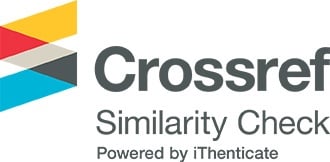Antibacterial activity of Piper betle L. (Piperaceae) and its products
Các tác giả
DOI: https://doi.org/10.59294/HIUJS2025027Từ khóa:
Piper betle, antibacterial, essential oilTóm tắt
Introduction: Piper betle L. is a common species in many countries and is used in the production of natural products mainly for its antibacterial activity. Objective: To investigate the antibacterial ability of 96%, 70%, 50% ethanol extracts, essential oils, and products from P. betle. Research methods: agar disc diffusion and dilution methods to determine MIC (minimum inhibitory concentration). Results: The extracts and essential oils of P. betle have good effects on 2 strains of bacteria E.coli and S.aureus, in which the extract with the best MIC is 96% ethanol extract (0.312 mg/mL and 0.078 mg/mL for E. coli and S. aureus, respectively). The MICs of essential oils were 0.5% and 0.0312% for E. coli and S. aureus, respectively, while products from P. betle were only active against S. aureus but had no effect on E.coli strains. Conclusion: Extracts, essential oils, and preparations from P.betle have antibacterial activity against two strains of bacteria, E.coli and S.aureus. Research should be directed to other strains of bacteria for more comprehensive evaluation.
Abstract
Introduction: Piper betle L. is a common species in many countries and is used in the production of natural products mainly for its antibacterial activity. Objective: To investigate the antibacterial ability of 96%, 70%, 50% ethanol extracts, essential oils, and products from P. betle. Research methods: agar disc diffusion and dilution methods to determine MIC (minimum inhibitory concentration). Results: The extracts and essential oils of P. betle have good effects on 2 strains of bacteria E.coli and S.aureus, in which the extract with the best MIC is 96% ethanol extract (0.312 mg/mL and 0.078 mg/mL for E. coli and S. aureus, respectively). The MICs of essential oils were 0.5% and 0.0312% for E. coli and S. aureus, respectively, while products from P. betle were only active against S. aureus but had no effect on E.coli strains. Conclusion: Extracts, essential oils, and preparations from P.betle have antibacterial activity against two strains of bacteria, E.coli and S.aureus. Research should be directed to other strains of bacteria for more comprehensive evaluation.
Tài liệu tham khảo
[1] Voon, W.W.Y; Ghali A.N., Rukayadi Y., Meor H.A.S. “Application of betel leaves (Piper betle L.) extract for preservation of homemade chili bo”. Int Food Res J. 21(6):2399-403, 2014.
[2] Ravindran P.N., Pillai G.S. and Nirmal B.K., Handbook of Herbs and Spices vol. 2, ed K V Peter, Cambridge: Woodhead, pp 53–103, 2004
DOI: https://doi.org/10.1533/9781855738355.1.53[3] Madhumita M., Guha P., Nag A.. “Bio‐actives of betel leaf (Piper betle L.): A comprehensive review on extraction, isolation, characterization, and biological activity”. Phytother Res. 34(10):2609-2627, 2020.
DOI: https://doi.org/10.1002/ptr.6715[4] Hoque M.M. et al, “Antibacterial Activity of Ethanol Extract of Betel Leaf (Piper betle L.) Against Some Food Borne Pathogens”, Bangla. J. Microbiol., vol. 28, no. 2, pp. 58–63, Sep. 2012
DOI: https://doi.org/10.3329/bjm.v28i2.11817[5] Mohanto S., Shreyasi D., and Surabhi M. "Piper betel Linn.; a brief study." Int J Curr Med Pharm Res 3.2, 1290-1296, 2017.
[6] Vandana D., Shalini T., “ Review study on potential activity of Piper betle”, Journal of Pharmacognosy and Phytochemistry 3(4): 93-98, 2014.
[7] Patil R.S., Harale P.M., Shivangekar K.V., Kumbhar P.P., Desai R.R.. “Phytochemical potential and in vitro antimicrobial activity of Piper betle Linn. leaf extracts”. J Chem Pharm Res. 7:1095-101, 2015.
[8] Pradhan D., Suri D.K.A., Pradhan D.D.K and Biswasroy P.. “Golden Heart of the Nature: Piper betle L.”, Journal of Pharmacognosy and Phytochemistry, Vol. 1 No. 6, 147-167, 2013.
[9] Thamaraikani and Kulandhaivel M.. “Purification of Hydroxychavicol from Piper betle Linn and Evaluation of Antimicrobial Activity against Some Food Poison Causing Bacteria”, Journal Of Pure And Applied Microbiology, Vol. 11(4), p. 1883-1889, 2017.
DOI: https://doi.org/10.22207/JPAM.11.4.28[10] Durani L.W., et al. “Piper betle L. modulates senescence-associated genes expression in replicative senescent human diploid fibroblasts”. BioMed Res. Int. May 17:2017.
DOI: https://doi.org/10.1155/2017/6894026[11] Ermawati F., “Antimicrobial activity analysis of Piper betle Linn leaves extract from Nganjuk, Sidoarjo and Batu against Escherichia coli, Salmonella sp., Staphylococcus aureus and Pseudomonas aeruginosa”, Journal of Physics: Conference Series, vol. 1951, no. 1, p. 012004, 2021, doi: 10.1088/1742-6596/1951/1/012004.
DOI: https://doi.org/10.1088/1742-6596/1951/1/012004[12] Azahar N.I., Mokhtarand M.N., Arifin M.A., “Piper betle: a review on its bioactive compounds, pharmacological properties, and extraction process”, IOP Conference Series: Materials Science and Engineering, vol. 991, no. 1, p. 012044, 2020, doi: 10.1088/1757-899x/991/1/012044.
DOI: https://doi.org/10.1088/1757-899X/991/1/012044[13] Nayaka N.M.D.M.W., Sasadara M.M.V., Sanjaya D.A., et al. “Piper betle (L): Recent Review of Antibacterial and Antifungal Properties, Safety Profiles, and Commercial Applications.” Molecules. 26(8):2321, 2021.
DOI: https://doi.org/10.3390/molecules26082321Tải xuống
Tải xuống: 104











